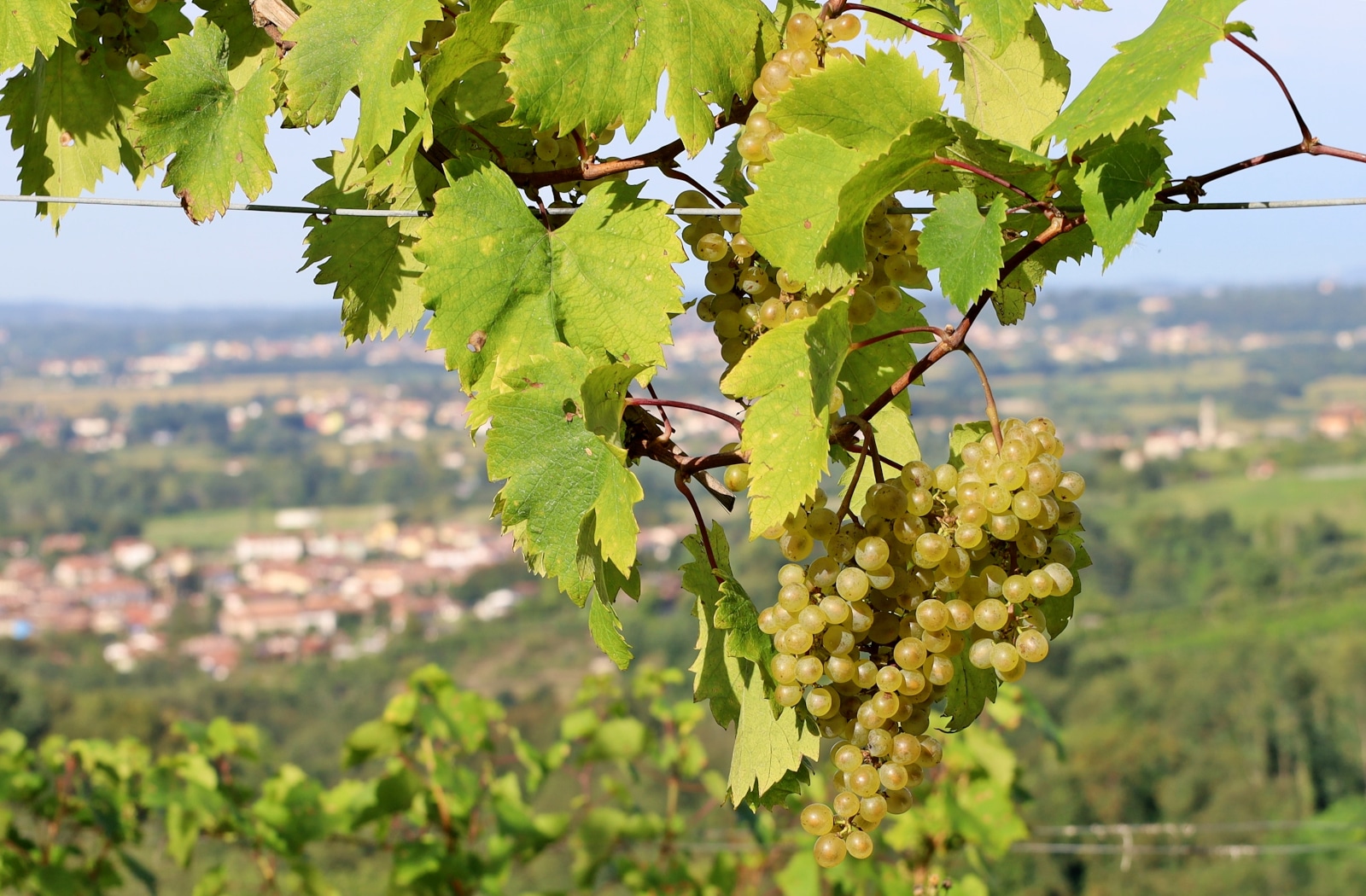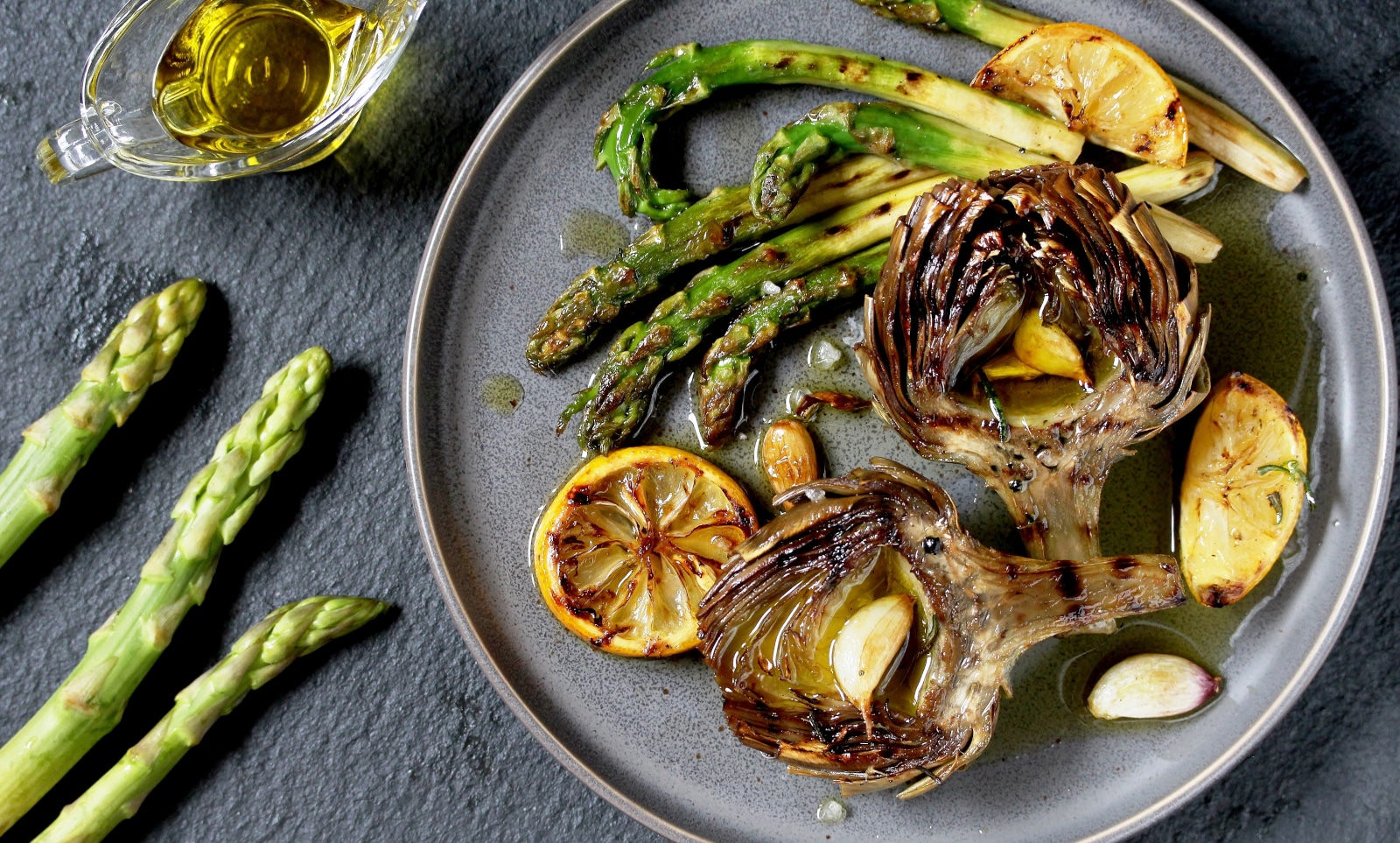You may have experienced the exquisite Friuli Pinot Grigio from Italy, also known as Friuli-Venezia Giulia. But it’s unlikely that you’ve tried a succulent glass of Friulano, a grape variety little known outside of Italy.
If you ever happen to visit Friuli, you are bound to taste this wine, primarily because of how popular it is. Almost every restaurant and home will unmistakably have a bottle of Friulano. Sadly, it doesn’t get the recognition it deserves because it gets overshadowed by its more popular counterpart — Pinot Grigio.
Read on to get some facts and figures on this notably delicious lean white wine.
What Is Friulano?
Friulano, also known as Sauvignon Vert, is one of the most famous white grape varieties found in the Friuli region of northeastern Italy. Notes of citrus, almond, minerality, and herbs are some of the most prominent Friulano characteristics, with a lively and fruit-forward taste.
The Friulano grape ripens quite early and buds late in the vineyard. One of the dangers of the grape is that the skin is quite thin, making it susceptible to mildew and rot. To avoid this risk, the grape is harvested early in the season.
Friulano can also be produced in different styles, with some wineries aging the Friulano in oak barrels. However, this process is much debated. Some believe that aging the wine in oak provides structure and complexity to the wine, whereas others argue that oak maturation overshadows the personality of the Friulano.
Regardless of the technicalities of its production, Friulano is a truly distinguished wine worth exploring.
What Color Is Friulano?
The Friulano color is a mild orange, resulting in people often connecting it with Sauvignon Blanc because of their similar appearance. It is said that both grapes were grown together in the fields of Bordeaux and were mixed when the grapes were sent to Chile.
Friulano and Sauvignon Blanc: What’s the Difference?
A lot of people often confuse Friulano with Sauvignon Blanc. The latter produces a more aromatic grape with strong scents of blackcurrant and gooseberries. However, their berry clusters and leaves are quite similar. Moreover, both these grapes are at risk of botrytis bunch rot because of their thin skin.
Apart from the different aromas of fruit, Friulano also has traces of nuttiness and minerality that is not present in Sauvignon Blanc. Friulano is also fuller, more acidic, and yet slightly less aromatic than Sauvignon Blanc.
What Does Friulano Mean?
Like most grapes, Friulano derives its name from the place where it is grown. For example, it is known as Friuli in Hungary, Savignonasse in Chile, and Sauvignon Vert in California. That is why this grape, like many others, has different names.
The grape has its origins in northeastern Italy in a small region called Friuli. It is recognized as one of the main varieties of white wines in the area. Moreover, the Friuli grape is also grown and harvested in Lombardy.

How to Pronounce Friulano?
The Friulano pronunciation isn’t tricky as such. However, remember to emphasize the letter “L.” The pronunciation follows the natural flow of the letters and doesn’t contain any silent letters.
So you would pronounce the word in the following manner:
Friu + lano
You shouldn’t have much of a problem enunciating this word.
Where Does Friulano Come From?
Friulano has its roots in northeastern Italy. The country is responsible for over 94% of this wine’s production, with the majority of the grapes grown in the northeast region of Friuli-Venezia Giulia. Not just a region, Friuli-Venezia Giulia also identifies the wine made there, but is today more commonly known as Pinot Grigio. However, the Friulano grape is also identified by the Friuli-Venezia Giulia name.
There is a theory that the Friulano grape originated in the Veneto, the second largest region in Italy where this grape is grown. However, people tend to dismiss this theory because historical evidence suggests that this grape had its origins in the 17th-century province of Gorizia in Friuli-Venezia Giulia.
Why Is Friulano Not Called Tocai Anymore?
Friulano from northeast Italy was also known as Tocai Friulano till March 31, 2007. The primary confusion here was because of Tokaji, a Hungarian wine. Interestingly, the wine does not have any traces of Friulano in it. It consists of Furmint, Muscat Blanc a Petits Grains, and Harslevelu. Both countries didn’t want to confuse one wine for the other because each has its unique complexity, character, flavor, and aroma.
Moreover, in the 1990s, Friulano and other grape varietals had instigated a legal feud over using the name “Tokay” and its multiple connotations. And in 1995, the European Court concluded that the name “Tokay” should only be used to describe the wines of Hungary. This ultimatum affected Alsace wine growers, too, because the Pinot Gris that was grown there was labeled as Tokay Pinot Gris.
Additionally, in March 2007, the European Court of Justice of Luxembourg prohibited using the name Tocai to describe the Friulano wine. Since then, Tocai Friulano is only known as Friulano.

What Kind of Wine Is Friulano?
Friulano is a fruit-forward, slightly sour, and nutty white wine from Friuli in northeastern Italy. As mentioned earlier, this grape has no connection to Sauvignon Blanc primarily because Sauvignon Blanc tends to have stronger notes of blackcurrant and gooseberry.
Friulano can be made in a multitude of styles and varies in taste depending on age and maturity. The grape is reputed for producing dry and light-bodied white wines. However, the wines can become full-bodied, especially if the grapes have been over-ripened before picking. The wine produced from such over-ripe grapes appeals primarily to the fans of rich white wines.
You might also be surprised to know that Friulano is often blended with other wines like Riesling, Chardonnay, Sauvignon Blanc, or the native Ribolla Gialla. This is done to add another layer of complexity and boldness to the wine.
Is Friulano Dry or Sweet?
The question of whether Friulano is dry or sweet primarily stems from the fact that Friulano has exquisite fruit-forward flavors and medium acidity. However, fruity flavors don’t always have to be signs of sweetness.
Besides, the Friulano grape always produces a dry wine. A dry wine technically means that after pressing the grapes, the sugar left by the must of the grape is converted into alcohol using yeast. After all the sugar is converted to alcohol, the wine produced is dry. And any sugar that hasn’t been converted is known as residual sugar or RS. In some cases, this is done deliberately to add to the complexity and richness of the wine. And then there are cases where the yeast wasn’t able to complete the fermentation process. However, a bottle of wine is still considered to be dry if there are few grams per liter of residual sugar.
What Does Friulano Taste Like?
The Friulano flavor profile is dry, lean, and nutty and has herbal notes with medium acidity. It also displays some elements of almonds, spices, and has high minerality. The Friulano grape is extremely productive, and thus, yield management is extremely important if one wants to maximize the flavors and aromas of the wine.
The Friulano aroma is also multifaceted. This beautiful bright-gold white wine emits aromas of almond blossoms, meadow flowers, and ripe fruits. These aromas are followed by exquisite Friulano tasting notes of tropical fruits, pears, and peach, with a hint of citrus, an almond finish, and a splash of honey.
Typically, a glass of Friulano will have medium acidity. However, it can be less acidic if the wines are put through malolactic fermentation (a process that turns malic acid into lactic acid). The body of the wine is light-medium to full. To add an extra element to the Friulano taste, some producers mature the wine in oak barrels, it is aged in these barrels to preserve the natural aromas and flavors of the grape.
How to Serve Friulano?
The ideal temperature to serve Friulano is between 50 degrees Fahrenheit and 53 degrees Fahrenheit. Friulano can either be fresh and delicate, or have a richer, fuller, and a more oaky taste. Serving the lighter version of Friulano at 50 degrees Fahrenheit is ideal. And 53 degrees Fahrenheit is best suited to the bolder version.
And if you haven’t been able to finish an entire bottle of Friulano in one sitting, that’s perfectly okay. All you need to do is re-cork it and place it into the refrigerator. However, the flavors of the wine will only stay put for 1-3 days. After that, the wine will start oxidizing.
How Long Should Friulano Breathe?
Letting a wine breathe before serving it simply means that you’re airing it out for a bit before you indulge. Wines usually need to be exposed to air so that all their flavors and aromas can burst forward. However, every wine doesn’t need to be aerated. Wines that are corked naturally let a little air escape through the corks with time. Moreover, white wines don’t necessarily need to be aerated.
However, whether to aerate a bottle of white wine or not ultimately comes down to you. The most rudimentary method to aerate your Friulano would be to pour it in your glass and swirl it a bit. Or you can use an aerator or decanter. All these methods can soften the tannins and allow you to experience all the flavors and aromas of the wine.

What Food to Pair With Friulano?
Friulano food pairing is extremely interesting. It’s not for nothing that this wine is considered to be one of the most food-friendly wines. The wine can be paired with a wide range of foods to tickle your taste buds.
It pairs beautifully with asparagus and artichokes and lends itself perfectly to seafood such as scallops, fish, shrimp, along with other cured meats.
You can also pair this wine with green roasted vegetables and salads. Friulano is one of the few wines that you can pair with difficult foods. Apart from artichokes and asparagus, the wine can also hold its own with Brussel sprouts and cabbages.
If that wasn’t enough to pique your interest in this beautiful wine, Friulano cheese pairing just might do the trick. Try pairing the wine with cheeses like:
- Derby
- Feta
- Brick
- Gouda
- Havarti
- Boursin herbed
- Majorero
- Jack cheese (dry)
- Raclette
How Much Alcohol Does Friulano Have?
The alcohol content in Friulano depends on where the grape is sourced from, which is the case with most wines. The climate of a region heavily influences the grape’s ripeness and that ripeness determines the alcohol content in a bottle of wine. The Friulano grape typically grows in the cool climate of northeastern Italy, making the Friulano alcohol content close to 13%.
How Many Calories Are There in Friulano?
Wines may not be the healthiest option for you if you’re on a fitness regime. However, they are certainly much better than other alcoholic beverages. Besides, wines are also famous for their antioxidant benefits. Therefore, if you’re looking for a healthier alcoholic beverage to cater to your needs, then having a glass of Friulano is alright.
One 6oz glass (177ml) of Friulano on average contains 125 calories. Moreover, the carbs in Friulano in a 6oz glass are only 4 grams. Therefore, one glass of Friulano two or three times a week won’t do your body much harm.
Conclusion
Friulano isn’t exactly a popular wine. It is mostly recognized within Italy and only in some other parts of the world like Chile and Hungary. But what this wine lacks in popularity, it more than makes up for in taste. If you’re the kind of person who loves experimenting with wines, then you must make sure you try a bottle of Friulano.
Pair this wine with roasted vegetables, seafood, or cheese if you like, and experience the refreshing, subtle, and crisp flavors of this indigenous white wine.







